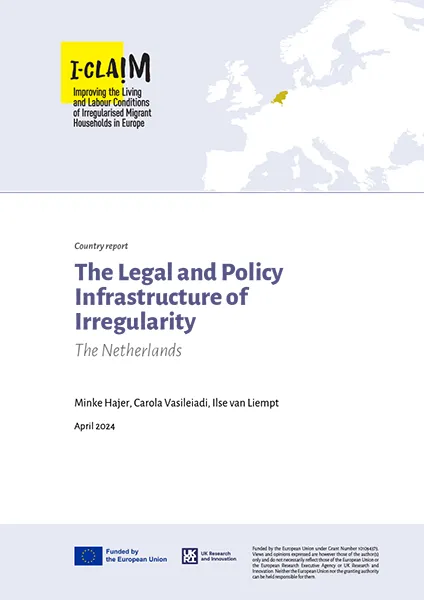VIEWS & NOTES
The Linking Act: Dutch Pioneering work of Welfare State Bordering
Minke Hajer & Ilse van Liempt / March 2024
An analysis of 25 years of policies regarding irregularised migrants in the Netherlands reveals an alarming trend towards increased social exclusion. The introduction of the Linking act in the late nineties, drastically shifted Dutch policies towards near full exclusion of migrants without residence permits. Until the mid-nineties, irregular migrants in the Netherlands were able to lead relatively normal lives. As important administrations were not linked at the time, the lack of legal status did for example not preclude irregularised migrants from working, paying taxes and social security contributions. The absence of a residence permit became problematic when this was linked to access to social and welfare policies and this is what the 1998 Linking Act did.
Under the guise of ‘closing the migration circle’, where a closed migration circle assumed migrants obtaining a residence permit or leaving the country, this legislation tied access to social services to migration status and excludes those migrants who did not leave physically but are still here. The Linking act marks a pioneering move towards what has been termed ‘welfare state bordering.’ Social policy is used by the Dutch government as a tool to erect borders around the welfare state and to exclude irregular migrants from its social provisions. What cannot be achieved through traditional migration and border policies aimed at physical exclusion is accomplished by the Linking Act. . Welfare state bordering shifts the border from the physical border to the border of the social system.
This focus on internal borders transfers the responsibility of migration policy onto the shoulders of welfare state providers, subtly intertwining the two realms. Suddenly, it becomes the task of the hospital receptionist to determine not just whether someone needs to see a doctor and when, but whether someone is entitled to medical assistance at all.
The far reaching exclusion under the Linking act, not only creates a hostile environment for irregularised migrants, it also creates a mentality of exclusion in society in general and among those charged with policy execution in particular. The mentality of exclusion perpetuates the (erroneous) assumption that migrants without residence permits have no rights, despite the existence of legal protections.
Within this mentality of exclusion we observe two policy trends: policies that favours exclusion of irregular migrants over the inclusion of their regular or Dutch family members, and spasmodic clinging to minor bureaucratic procedures favouring exclusion over regularization.
We observe the legitimization of excluding entire households in order to exclude irregularised migrants from the welfare state. While the Linking act assumes the possibility of a closed migration circle, reality shows that irregularised migrants both remain present in society and establish (mixed-status) households with citizens and regular migrants. However, in the mentality of exclusion, it has become more important to prevent one irregular migrant from accessing welfare state provisions than providing access to welfare for citizens and regular migrants.
Moreover, the continuous presence of irregularised migrants also means that some acquire potential grounds for regularization. However, the focus on exclusion in bureaucratic procedures makes regularization difficult in practice even for those who in theory have grounds for it, for example based on family-life. An exemplary policy is the MVV requirement. The MVV basically is an entry visa, given for those who apply for a residence permit from their country of origin. The MVV allows one to travel to the Netherlands, upon arrival the actual residence permit will be issued. However, instead of waving the MVV requirement for people requesting a residence permit while already being in the Netherlands; the Dutch policy is to request people to return to their country of origin to apply for the entry visa. This seemingly simple bureaucratic check-mark, serves as a stumbling block for irregularised migrants seeking to navigate the pathway to legal status, and therefore perpetuates a cycle of marginalization and disenfranchisement for them and their family.
